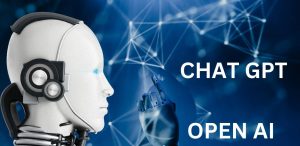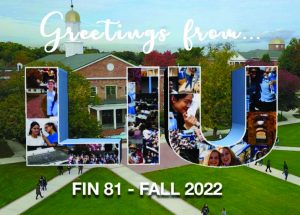By Grace Park, Staff Writer
Artificial Intelligence (AI) art generating companies are recent targets of lawsuits brought by artists who claim the services infringed copyright.
Three artists are in a lawsuit against the company, Stability AI. The artists Kelly McKernan, Sarah Anderson and Karla Ortiz claim AI generators have exploited their artwork without their permission to create the training for the program’s algorithms.
However, the trio of artists are not alone. Getty Images has also filed a lawsuit against Stability AI.
The photography company claims that Stability AI copied more than 12 million images from its database without permission or compensation.
The two lawsuits are the latest in the ongoing legal battle between the creators of AI art generators and artists.
The increasing popularity of AI art generated programs, as well as the recent lawsuits, leaves many wondering where the increase of AI art development came from as well as if AI generated art is actually theft.
A program called DALL-E, a combination of the names of the cartoon robot WALL-E and the Spanish artist Salvador Dalí, was introduced by OpenAI in Jan. 2021.
A year later, DALL-E 2 was created, allowing for more realistic and accurate images with 4x greater resolution.
However, both programs were not available to the general public and applicants were placed on a waiting list until Sep. 2022.
During the waiting period, many created other text to image generators.
With the availability of several AI programs, anyone can instantly design anything they want to see on their computer screen.
Students on campus shared their thoughts on AI generated art and whether they would personally use it while making art.
“I can understand how it could be a valuable tool in the hands of other artists. I’m sure it’s capable of saving a large amount of time on commercial projects and will eventually leave many without jobs. But personally, I am against the idea of artificial intelligence as a whole, so I do not plan on incorporating it into my artwork at any point,” junior digital art and design major Michael Moffa said.
Junior art therapy major Olivia Glusic agreed that it could save time for artists, as well as be a source of inspiration.
“I think it’s a really unique way of helping an artist’s creative process. Art has really expanded within the past couple of years, especially digital art and illustration. AI really helps get rid of some of the more tedious or busy work steps of the art making process,” Glusic said.
There is a lot of controversy over whether AI-created art can be considered art since these programs evaluate hundreds of pieces of existing content and utilize that to analyze and learn to eventually generate their own work.
Moffa commented on the lack of emotional depth available with AI generated art.
“For art to be art, it has to be created with emotion. While humans are not the only beings on the face of the planet capable of emotion, I do think that they’re the only ones that are capable of representing their emotions in the form of art,” Moffa said.
Glusic shared a different perspective on the relationship between emotions and art and whether AI undermines that.
“I don’t think art necessarily needs to be human-made for it to be considered art. I focus more on the interpretation of art; how you view different forms of art, and what it means to you. Art doesn’t necessarily have defining guidelines or rules, it’s about the message you receive from it,” Glusic said.
Many artists are conflicted about the use of AI while others view it as a tool. Moffa is wary of the sudden rise of AI.
“AI is right near the top of the list of dangers that face the human race. With that being said, I find any art that’s produced by artificial intelligence to be terrifying,” Moffa said.
Glusic, on the other hand, views the incorporation of AI into art in a more positive light.
“AI art is in a separate category from human made art, but it can still create communication, or a message for the viewer. If AI art can create art with meaning, I think it’s a great tool, especially for assisting in the art making process,” Glusic said.
AI is now set to transform the industry.
“With technology consistently progressing, I think AI has the potential to create some really unique pieces. Whether on its own, or as an aid to artists, I think AI art is continuing to expand and it’s better to work with it versus against it,” Glusic said.
The question of whether people will eventually accept utilizing AI in art is raised by the way that the technology seems to advance on a daily basis.
“I foresee this happening commercially rather than people using it for art they are otherwise creating for pleasure. But like I said before, I definitely believe that there will be a point in time in which artificial intelligence will begin to put people in the design industry out of a job,” Moffa said.
It is redefining how artists look at the industry.
“Everyone can interpret art differently, but I am open to seeing how AI art develops,” Glusic said.






Be First to Comment